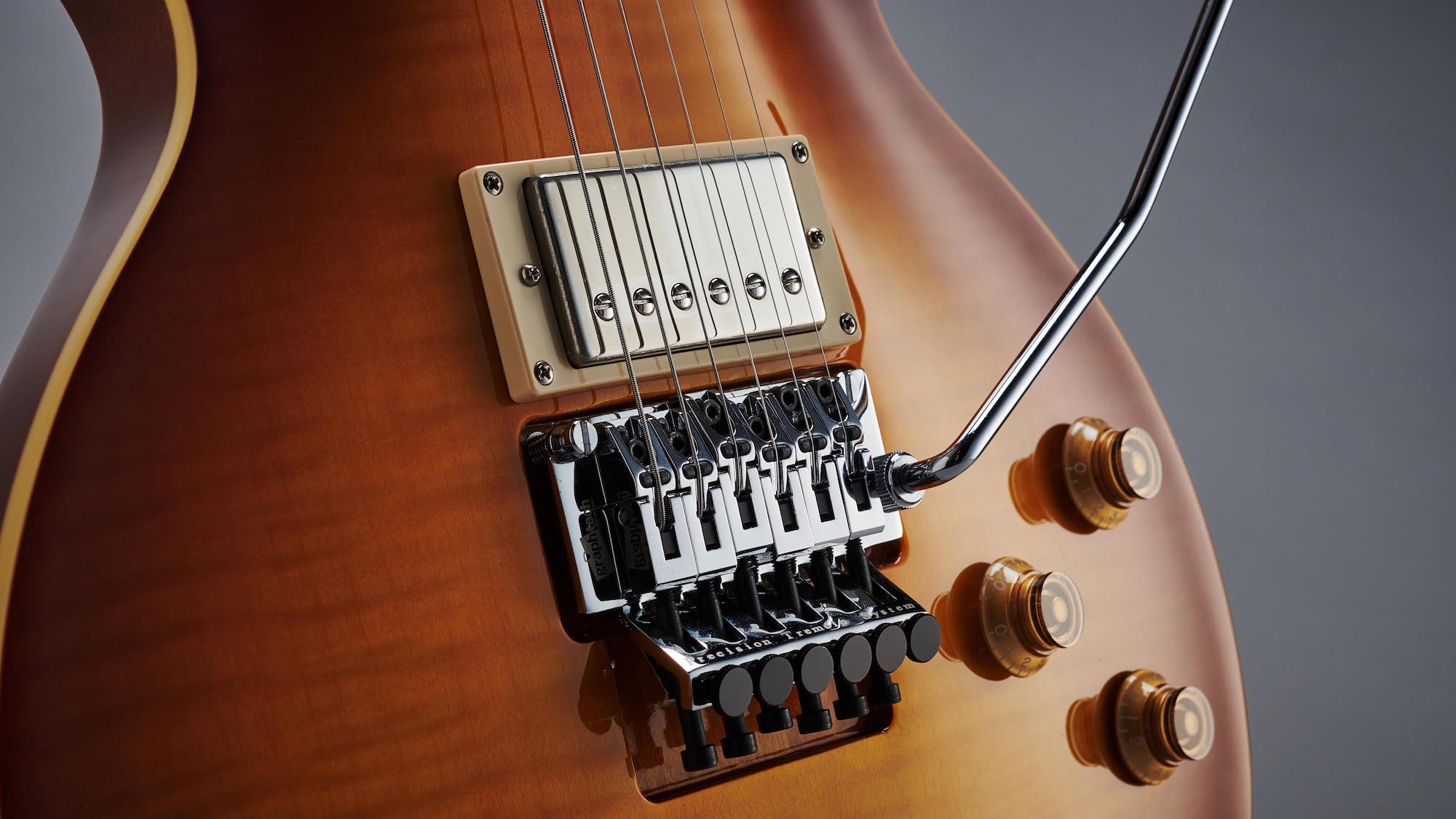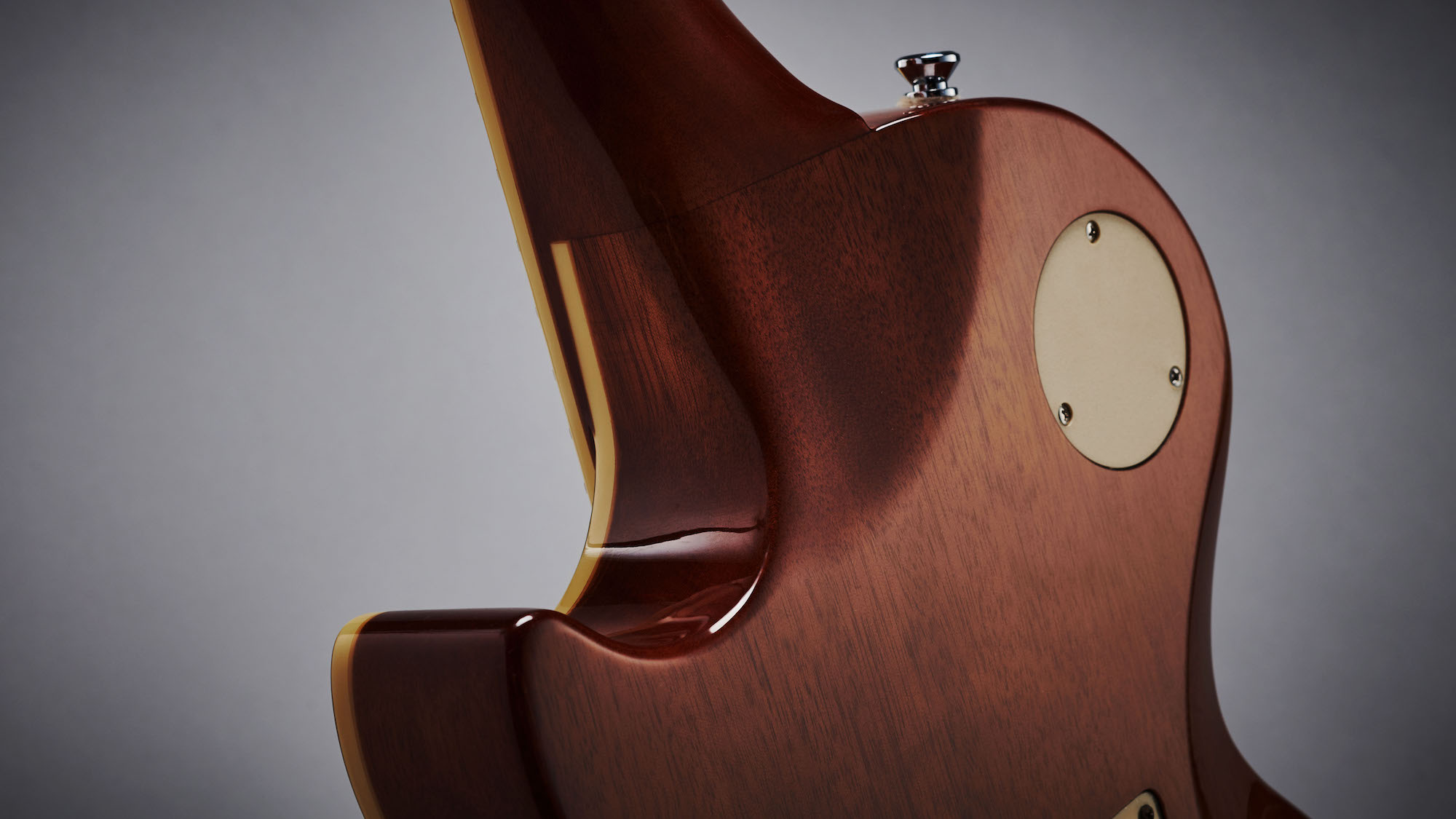Alex Lifeson on making his Epiphone Les Paul Axcess: “My biggest concern was, can we get Custom Shop quality in a guitar that costs quite a bit less? I think we did it”
The Rush legend discusses his new signature model, fresh music and collaborations, and the likelihood of once again teaming up with Geddy Lee

Across five decades with Rush, Alex Lifeson put his own unique spin on the role of the electric guitar in the power trio format, imbuing his band’s compositions with twisted riffs, colorful extended chords, ringing arpeggios, wild whammy bar squiggles, sticky pop melodies and all manner of proggy excursions.
So it’s not surprising that when he teamed up with Gibson roughly a decade ago to design his own signature guitar, the result – the Alex Lifeson Les Paul Axcess – was, like the man himself, a distinctive take on a tried-and-true classic.
“I didn’t want to just get my name plastered on a guitar model and then sell it based on that,” Lifeson tells Guitar World. “I really wanted to create something that was an instrument I would want to buy and own and play.”
The Axcess was indeed that instrument. And now Lifeson has collaborated on an Epiphone version of the guitar, bringing its unique feature set to a model that we can all buy and own and play.
“My biggest concern was, can we get Custom Shop quality, but in a guitar that costs quite a bit less?,” Lifeson says. “And I think we did it.”
It would appear that they did. The new Epiphone Alex Lifeson Les Paul Axcess Standard boasts classic Les Paul features, including a mahogany body, a carved maple top and a mahogany neck.
There’s also an Epiphone Ceramic Pro humbucker in the neck position and an Epiphone ProBucker 3 at the bridge, providing classic LP tones, and it’s all wrapped up in “traditional,” to use Lifeson’s word, Viceroy Brown finish.
Get The Pick Newsletter
All the latest guitar news, interviews, lessons, reviews, deals and more, direct to your inbox!

From there, the Axcess is jam-packed with updated and highly specialized features. Push-pull coil-splitting options on the individual pickup volume controls provide for a wide range of humbucker and single-coil tones, while the Graph Tech Ghost Floyd Rose system allows for some very un-les-Paul-like whammy work and the Ghost piezo bridge saddles offer up impressively realistic acoustic sounds.
What’s more, acoustic and magnetic voices can be blended to create a richly layered sound, and then routed through either a traditional mono jack or via two cables to split the individual magnetic and piezo outputs.
The piezo, Lifeson says, “is a big move that was very specific to me with Rush, because I wanted to be able to have something that was more acoustic sounding that I could either blend in or feature on its own, without having to have the acoustic on a stand and then go back and forth with the electric.”
Regarding Rush songs where the Ghost system came in particularly handy, Lifeson says that “one example is Camera Eye, from Moving Pictures. When we would play that live I would use the piezo because the verses have acoustic in them. And then I would blend the acoustic in as well on Natural Science [from Permanent Waves], because that has a lot of very clean arpeggios.”
He continues, “I would use the vibrato arm on so many things, and the coil splits were really handy because I liked that combination I had on some of my earlier modified Strats, where I had two single coils with a humbucker in the back. I always missed having the ability to have so many clean sounds, and certainly having these coil splits really provides that.”

An update on the Epiphone version of the Axcess is the guitar’s neck shape, which is identified as the “Lifeson profile.” What, exactly, does this mean?
“I would call it a ‘moderate radius,’ Lifeson says. “Not too chunky, but not too thin. For example, my ’76 ES-335 has the thinnest neck in the world. But then my ’58 Les Paul had quite a chunky neck, which is a little too big for me. So I wanted something sort of in the middle, with really nice playability.
I was really, really happy and quite impressed with what Epiphone were able to build. It’s really a terrific instrument
“And then Epiphone sculpted the neck-to-body joint so that you can get up on those frets comfortably without having to twist your hand to get into the high notes. So it’s just a really comfortable neck. And overall, the quality on this guitar is great – it’s well-built, it sounds good and the playability is great.”
Lifeson laughs. “I had the prototype here for a couple of weeks and I was bashing it around, trying to wreck it as much as I could. And I was really, really happy and quite impressed with what Epiphone were able to build. It’s really a terrific instrument.”
That instrument, it’s worth noting, is not the only new thing in Lifeson’s orbit these days. While the guitarist retreated from the public eye following the tragic death of Rush drummer Neil Peart, who passed away in January 2020 at age 67 after a long battle with glioblastoma, he recently unveiled two new instrumental songs, Kabul Blues and Spy House, to coincide with the advertising campaign for the launch of the Epiphone Les Paul Axcess.
“I wanted to use some background music along with the launch, and I gravitated to those two pieces,” Lifeson says. “The songs are quite different from each other – Kabul Blues is a little darker, more mysterious, while Spy House is more in-your-face and rocking – but the tempos seemed to fit what I was creating visually.
“Then Gibson wanted to make the songs available, so we thought it’d be a good idea to put them on my newly created website, which I’d like to use as a vehicle to keep adding some more live music and recorded music that I’ve been doing for the last 30 years.”
The instrumentals are just the beginning of more new music to come. Lifeson recently revealed he has been working with a new band, Envy of None, which also includes longtime friend Andy Curran – best known as the bassist and singer for Canadian rockers Coney Hatch – and 24-year-old Portland, Oregon-based vocalist Maiah Wynne.
An album of original songs is in the works (reportedly, Kabul Blues and Spy House will be a part of the project), and the material will potentially be unlike anything we’ve heard from Lifeson previously.
“There’s lots of straight-ahead guitar, but there’s also mandola and lots of manipulated, sequenced things,” he says. “And I’ve really become an aficionado of backwards guitar as well. So there’s everything from acoustic fingerstyle stuff to really heavy stuff, trippy kind of backwards things to Hendrix-y melodic parts. I’m really quite pleased with it. We have 10 songs and they’re all sounding really, really cool.”
As for making new music with his Rush bandmate, Geddy Lee, one of these days, Lifeson says the door is always open, though neither of them are planning to walk through it any time soon.
“We’re not putting any pressure on it or anything,” Lifeson says. “We had a lot of good years together and we still love each other very much. I talk to Geddy every other day – we’re best friends. There’s more to our life together than just writing music. So if it happens, it happens. And it’ll happen when it happens.”
Rich is the co-author of the best-selling Nöthin' But a Good Time: The Uncensored History of the '80s Hard Rock Explosion. He is also a recording and performing musician, and a former editor of Guitar World magazine and executive editor of Guitar Aficionado magazine. He has authored several additional books, among them Kurt Cobain: Montage of Heck, the companion to the documentary of the same name.
“It holds its own purely as a playable guitar. It’s really cool for the traveling musician – you can bring it on a flight and it fits beneath the seat”: Why Steve Stevens put his name to a foldable guitar
“Finely tuned instruments with effortless playability and one of the best vibratos there is”: PRS Standard 24 Satin and S2 Standard 24 Satin review













